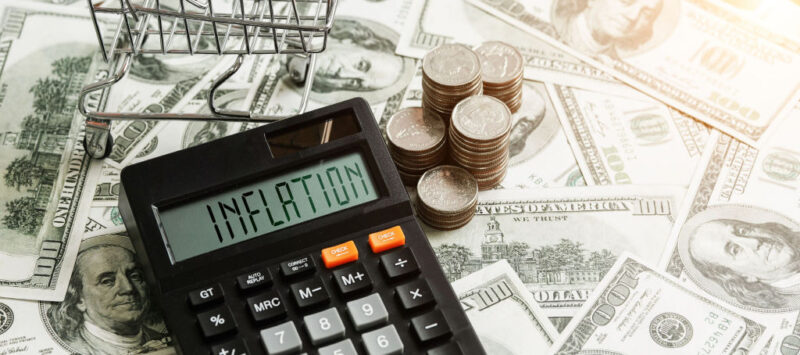This bear market is unusually challenging for investors because there is nowhere to hide. The selloff includes just about everything – every asset class.
This contrasts starkly with the historical norm, making a mockery of investing’s conventional wisdom.
We’re told not to put all our eggs in one basket. The idea is that each basket performs differently at different times. During a crash, at least some of your portfolio is supposed to hold up.
But what do you do when all the baskets get hit by the same earthquake?
Usually, when stocks are crashing, bonds surge. But this time, bonds have performed even worse than stocks by some measures!
Property, a favourite hedge for inflation because of its tax advantages and the leverage used to buy it, is plunging too.
Gold is fairly flat, especially in currencies other than the US dollar. But it’s supposed to surge at times like this.
Utilities stocks are a favourite defensive investment, but they’re being hammered by disruption and government intervention like price caps.
Bank stocks are supposed to benefit from rising interest rates. But not this time. There’s a panic over interest rates going too high too fast for their customers.
Basic necessities like food are caught up in supply chain and fertiliser and energy chaos. So those stocks are struggling too.
Energy stocks are performing quite well, but the government is intent on crushing the most important parts of their businesses in coming years.
Commodities keep booming and busting erratically and they’re not usually a good way to play market crashes. I suspect a lot of the commodities boom is explained by underinvestment, which only makes commodity producers look profitable in the short term because they’re not spending money on new projects. In a few years’ time, they won’t have enough revenue.
Cash is outperforming most investment classes lately, which is incredibly ironic given the surge in inflation…
The point is, there’s nowhere to hide from this sell-off. The story we’ve been fed for decades about diversification is not proving to be true so far. Everything is falling together.
Why is that the case, though? What has gone wrong?
Well, central bankers and governments intervened so heavily in the economy that they created an everything bubble. Even the mainstream media figured this out on the way up… which is very unusual.
But what was the everything bubble? Well, all asset prices were bid up to lofty levels.
Bonds went into negative nominal yields, which is another way to say that their prices were bid up to such absurd levels that investors were guaranteed to lose money.
Property prices went berserk as interest rates hit zero because debt became so cheap.
Stocks without earnings reached ridiculous market capitalisations.
Tech stocks went into a repeat of the tech bubble.
Cryptocurrencies soared.
Pundits like Dave Portnoy made a career from claiming that stocks only go up.
But what goes up on a wave of central bank stimulus must come down, regardless of inflation and a bear market. As the economist Ludwig von Mises explained, it’s only a matter of time and severity:
There is no means of avoiding the final collapse of a boom brought about by credit expansion. The alternative is only whether the crisis should come sooner as the result of voluntary abandonment of further credit expansion, or later as a final and total catastrophe of the currency system involved.
Japan is currently testing the theory, as we looked into yesterday.
In simple English, central bankers pumped up the market to such highs that they must all fall now that central bank stimulus is being withdrawn.
Previously such price action – the boom and the bust – applied to isolated sectors of the market like property in 2006, tech stocks in 1999, Asian stocks in 1996 and so on. But this time, we’re in the Everything Bubble: the central bankers had pumped up everything. And so, everything must come down together, whatever the economic and financial conditions might be.
Another explanation is that the combination a recession and inflation is a rare one which is bad for all asset classes. Remember, inflation and recession are supposed to be mutually exclusive.
Economists simply presumed this to be the case until the 1970s.
Investments which rely on a hot economy are falling because of a recession and investments which rely on low inflation are falling as prices surge.
The thing is, both measures are yet to get a lot worse. The Bank of England’s latest forecast is for inflation to top 11%. And a recession is only just emerging as a consensus forecast.
The market rout may be only the beginning.
Check out how to escape this nightmarish investment landscape.
Here is one last thing before you go.
I received some comments about Monday’s article which explained the difference between true inflation and a supply shock. I thought of a much better explanation than the 1,000 words it took on Monday. It’s a simple question:
Is the oil price rising because of inflation? Or is inflation rising because of the oil price?
It’s not just oil, of course. But you get the idea. Our inflation is being driven by commodity prices rising and not the other way around. That means it could end very abruptly, or true inflation could be yet to emerge.
To find out why this question matters so much to investors, check out Monday’s article.

Nick Hubble
Editor, Fortune & Freedom




